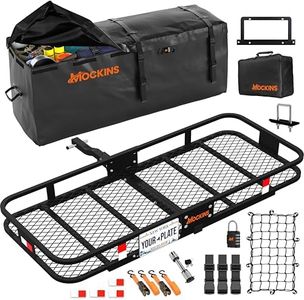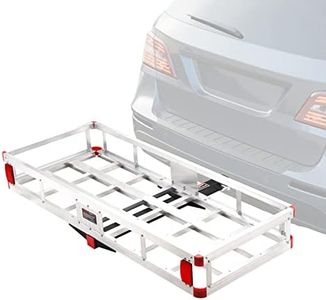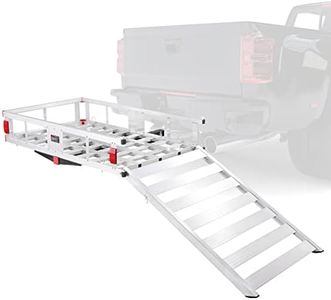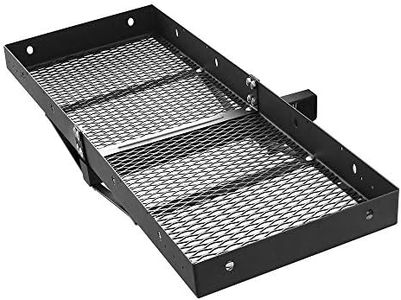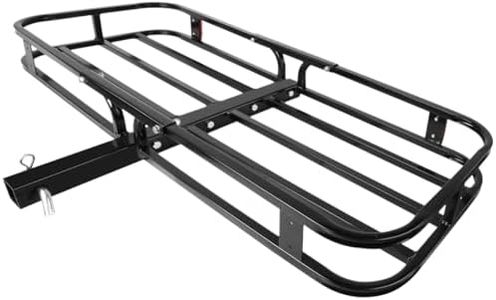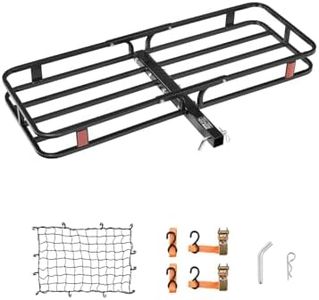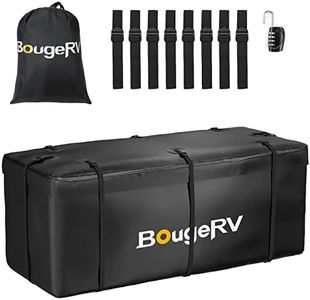We Use CookiesWe use cookies to enhance the security, performance,
functionality and for analytical and promotional activities. By continuing to browse this site you
are agreeing to our privacy policy
10 Best Hitch Cargo Carriers
From leading brands and best sellers available on the web.Buying Guide for the Best Hitch Cargo Carriers
Choosing the right hitch cargo carrier can really improve your travel experience by freeing up space inside your vehicle and making it easier to bring along extra items. To pick the best match for your needs, it helps to understand the main features and specifications to look for. Think about not only how much stuff you need to carry, but also what types of items you’ll be transporting, the size and capability of your vehicle, and your travel habits.Weight CapacityWeight capacity is the maximum amount of weight the cargo carrier can safely support. This is crucial because overloading a carrier can damage your vehicle, reduce safety, or even break the carrier itself. When comparing options, you’ll see weight capacities ranging from around 300 pounds (for lighter loads like luggage or camping gear) up to 500 pounds (for heavier items like coolers, tools, or bulky equipment). Choose a weight range that matches what you plan to carry. Always check your vehicle’s hitch rating as well—it should be able to support the combined weight of the carrier and your cargo.
Carrier Size (Dimensions)The size or dimensions of the carrier tell you how much usable space you’ll have for your cargo. Carriers usually range from about 48 to 60 inches long and 20 to 25 inches wide. Consider the size and shape of items you’ll want to transport; for example, longer carriers are better for large suitcases or sports gear, while more compact options may suit smaller loads. Make sure the dimensions fit your storage needs and also leave enough ground clearance for safe driving.
MaterialHitch cargo carriers are typically made from steel or aluminum. Steel is heavier but often sturdier and less expensive, making it a good choice for heavier loads. Aluminum is much lighter and resists rust, which is ideal if you plan to remove and reinstall the carrier often, or if you'll be using it in wet or snowy conditions. Choose based on how much weight you want to manage when lifting and installing, and think about how often you’ll be exposed to the elements.
Mounting Type (Hitch Compatibility)Cargo carriers attach to your vehicle using the rear hitch receiver, which can come in various sizes—most commonly 1.25-inch or 2-inch. Make sure the carrier you select matches the hitch size on your vehicle. 2-inch hitches are more common on larger SUVs and trucks and can generally handle heavier carriers and loads. Confirm compatibility before purchasing, as an incorrect fit can lead to unsafe driving.
Side Rails or WallsSide rails or walls help keep items from sliding off during travel, adding both safety and convenience. Some carriers have low rails, which work well for buckets, bins, or coolers, while others have high rails offering extra support for stacking or strapping in awkwardly shaped items. If you frequently carry smaller or stackable items, tall rails might be useful. If you need to load large or flat objects, a carrier with lower sides could provide easier access.
Foldability/Tilt FunctionSome cargo carriers can fold up against the back of your vehicle when not in use, or tilt down to allow access to the rear door or trunk. This function is valuable if you don’t want to remove the carrier between trips or need regular access to the rear of your vehicle. Consider this feature if convenience and flexibility are important for your driving and unloading patterns.
Weather ProtectionSome cargo carriers come with solid bottoms or integrated mesh floors, and others may have included covers. Weather protection helps keep your gear safe from rain, snow, or road debris. If you often travel in wet conditions or need to protect sensitive cargo, look for carriers with solid bases or optional fitted covers.
